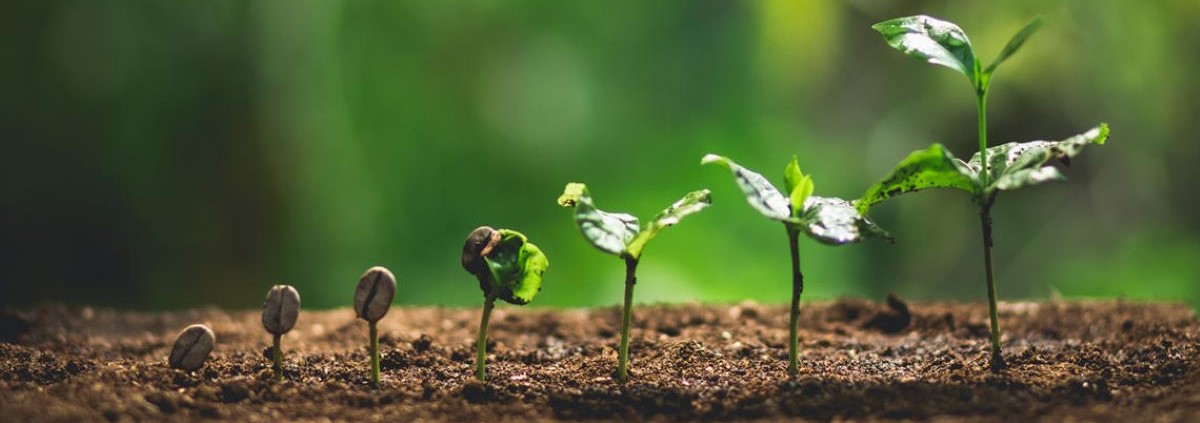-
Posts
0 -
Joined
-
Last visited
Everything posted by 52ecobags
-
What's the difference between Biodegradable and Compostable?
In This Article
- Definition of BiodegradableDefinition of CompostableBiodegradable and Compostable PlasticsChoosing Biodegradable vs. Compostable Products
- The terms "biodegradable" and "compostable" are everywhere, but they're often used interchangeably, incorrectly, or misleadingly – adding a layer of uncertainty for anyone trying to shop sustainably.
In order to make truly planet-friendly choices, it's important to understand what biodegradable and compostable mean, what they don't mean, and how they differ.
Definition of Biodegradable
Treehugger / Sanja Kostic
The term biodegradable refers to any material that can be broken down by microorganisms (like bacteria and fungi) and assimilated into the natural environment. Biodegradation is a naturally occurring process; when an object degrades, its original composition degrades into simple components like biomass, carbon dioxide, water. This process can occur with or without oxygen, but it takes less time when oxygen is present — like when a leaf pile in your yard breaks down over the course of a season.
Biodegradation can take anywhere from a few days (for vegetable scraps) to 500 or more years (for a plastic bag).
Time for Household Items to Biodegrade Item Time to Biodegrade Vegetables 5 days - 1 month Paper 2 - 5 months Cotton T-shirt 6 months Tree Leaves 1 year Nylon Fabric 30 - 40 years Aluminum Cans 80 - 100 years Styrofoam Cups 500+ years Plastic Bags 500+ years
How long something takes to biodegrade depends on both the chemical composition of the object and the way that it's stored. Variables like temperature and the presence of water, light, and oxygen affect the speed of degradation. Most landfills have so little light, air, and moisture that the biodegradation process is significantly slowed. vegetable peels, eggshells, paper, and garden waste are all straightforwardly biodegradable. When discarded, these items break down in a relatively short period of time, so they can be assimilated into the natural environment. Even some commercial items like coconut coir dish scrubbers fall into this category. In comparison, materials like styrofoam, plastic, and aluminum are typically deemed non-biodegradable because of how long they take to break down.Treehugger / Sanja Kostic
Figuring out if an object is actually biodegradable can be challenging, especially when you're assessing objects that aren't usually made from biodegradable materials, like cell phone cases or tote bags. The Federal Trade Commission (FTC) and various third-party certifiers have taken steps to monitor the labeling of products as biodegradable.4 So, if you’re trying to determine whether something is biodegradable, check the packaging and don’t hesitate to contact the company to ask questions.That said, most "biodegradable" consumer products won't actually assimilate into the earth through natural biodegradation. In order to biodegrade, they need a specific set of conditions created through the process of composting.
Definition of Compostable
Treehugger / Sanja Kostic
The term compostable refers to a product or material that can biodegrade under specific, human-driven circumstances. Unlike biodegradation, which is an entirely natural process, composting requires human intervention.During composting, microorganisms break down organic matter with the help of humans, who contribute the water, oxygen, and organic matter necessary to optimize conditions. The composting process generally takes between a few months and one to three years. The timing is impacted by variables like oxygen, water, light, and the type of composting environment.5 There are two major types of composting:
:max_bytes(150000):strip_icc():format(webp)/biodegradable-compostable-difference-5094376-v2-d4986ed2092345ffbe0a1f00bcfbc22b.png)
Treehugger / Lara Antal
- Residential composting. Residential composting involves collecting food scraps in a bin or heap, combining them with yard waste, and periodically turning the mixture over to promote its breakdown into more basic organic matter. For that reason, you won’t be able to break down things like meat, cheese, and fish in a residential bin — there simply won’t be enough heat produced.
- Commercial composting. Commercial composting involves screening and sorting materials into organics and inorganics, breaking them down with chippers and grinders, and creating optimal moisture, temperature, and oxygen conditions. As a result, commercial composters are able to break down more complex products than at-home composters.
If you're considering purchasing a product that claims to be compostable, make sure to read the label. As with biodegradable items, labeling of compostable materials is regulated by the FTC and third-party certifiers. You'll want to find out whether the product can be composted in a backyard bin or will require commercial composting.5 Not all cities offer commercial composting, and you don’t want to choose a compostable product only to find out that you can't actually compost it.
Biodegradable and Compostable Plastics
Treehugger / Sanja Kostic
If you’ve recently shopped for a phone case, travel mug, or reusable grocery bag, you may have encountered biodegradable and compostable plastic, also known as bioplastic. Many restaurants are even transitioning to bioplastics for takeout containers, utensils, and cups. These items are typically made from materials like corn starch, cellulose, and soy. When properly composted, they break down into non-toxic carbon dioxide, biomass, and water.6However, just because a plastic is biodegradable or compostable doesn’t mean it will break down under any and all conditions, or that it's truly eco-friendly.7 Consider the pros and cons of compostable plastics before making your next purchase.
Pros of Biodegradable and Compostable Plastics
- Unlike conventional, petroleum-based plastic, bioplastics are plant-based.
- Bioplastic manufacturing may have a lower carbon footprint than traditional plastics (but there are a lot of variables and uncertainties).8
Cons of Biodegradable and Compostable Plastics
- Breaking down bioplastics requires intense heat only available at industrial composting facilities. In an at-home compost heap (or in a landfill), they take a long time to break down.
- Bioplastics do not address the issue of marine plastics, as they do not biodegrade quickly in marine conditions.
- Bioplastics cannot be commingled with recyclable plastics; they must be recycled in separate streams.
Choosing Biodegradable vs. Compostable Products
Treehugger / Sanja Kostic
If you’re trying to reduce your environmental impact, compostable items are a good option. Composting an item means it won't end up in a landfill, and if you compost at home, you can use that organic matter to help your (or your neighbor's) garden grow. In addition, the labeling of compostable goods is often more straightforward, so you can be sure you’re choosing a more eco-friendly product.That said, compostable products require certain conditions to break down, so it’s important to commit to actually composting those items, rather than sending them to a landfill. Also, if an item is identified as commercially compostable, make sure you have access to a facility that can handle the waste. Bioplastics are in some ways an improvement over conventional plastics, but they can still have a negative impact on the environment if they’re disposed of improperly. As always, the best option is to reduce your consumption, reuse what you already have, and avoid single-use products as much as possible.
This article transfer from Internet. Respect the copyright of author!


